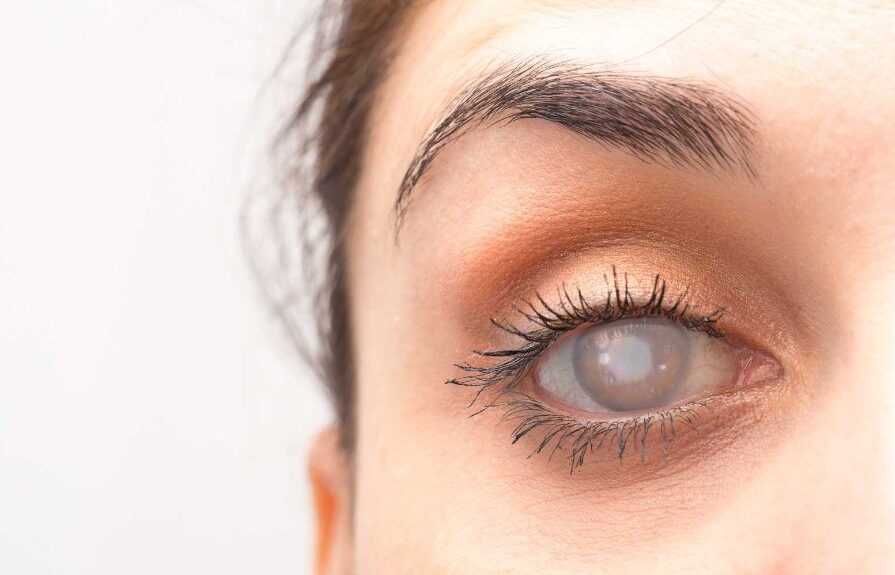Cataracts are cloudy areas in the lens of the eye that affect a person’s vision. These areas form when the proteins in the eye’s lens break down. Cataracts may cause a person to have blurry vision, glare, trouble seeing at night, light sensitivity, and eventually cause eyesight loss. There are several treatment options available, including cataract surgery.
Non-surgical Cataract Treatment
Non-surgical treatment for cataracts does not remove cataracts but aims at improving your vision. Your eye doctor may prescribe anti-glare glasses or magnifying lenses for better vision. They may also add tint or coating to your lenses to reduce their cloudiness. Positioning lamps or lights at certain angles can also help you see better.
The only way to avoid surgery is to keep your cataracts from developing further. Exposure to direct sunlight may cause further development of cataracts. To avoid this, your optometrist may recommend walking in the sun with a hat or eyeglasses.
Surgical Cataract Treatment
Doctors recommend surgical removal when cataracts cause severe vision impairment, making it difficult to do routine activities such as reading, driving, or texting. You may have difficulty judging distances when you have a cataract that keeps you from seeing out of one eye.
During cataract surgery, your doctor removes and replaces the clouded lens with an artificial lens. If you have cataracts in both eyes, you have to undergo surgical removal twice, as doctors operate on one eye at a time to minimize complications. Cataract surgery is an outpatient procedure performed under local anesthesia. You can go home immediately after your surgery if there are no complications.
There are three options for surgical cataract removal:
Phacoemulsification
Phacoemulsification involves the use of an ultrasonic device that doctors insert into the eye through a tiny incision. The device emits ultrasonic waves, which soften and break the clouded lens into an emulsified gelatinous mass. Doctors flush the eye with sterile fluid, then remove the broken-up lens using a suction device.
Doctors then replace the lens with an artificial lens. Due to the small size of the incision made into the eye, the doctor only needs one stitch to close the wound. Sometimes you may not even need a stitch.
Extracapsular Surgery
During extracapsular surgery, the eye doctor makes a large incision in the eye and removes the center part of the lens in one piece. In this procedure, doctors leave the back half of the lens’s outer covering in the eye. You need several stitches after extracapsular cataract surgery due to the large incision.
Most eye doctors avoid extracapsular surgery today because it has a higher risk of complications and a longer recovery time. You also risk astigmatism, which causes the eye to refract light from two points instead of one, causing double or distorted vision.
Intracapsular Surgery
Doctors perform intracapsular cataract surgery when a person has severe cataract formation or eye trauma. The procedure is rare since most people get treatment before their cataracts advance. During intracapsular cataract surgery, the doctor makes a large incision. They remove the lens in its entirety and the thin capsule surrounding the lens.
After lens removal, doctors implant an intraocular lens (IOL) into the eye. IOL implantation is usually difficult after intracapsular surgery, and it takes longer to heal from the surgery due to the size of the eye incision. You also have to wear thick glasses after intracapsular cataract surgery.
Cataract Surgery Aftercare
After your surgery, your doctor may advise you to wear an eye patch for several nights after surgery to protect your eye. They may also ask you to avoid bending over and lifting heavy things for the first two weeks after the surgery.
Most people can see better one to three days after cataract surgery. It might take longer to see clearly if you had severe cataract formation. Your doctor may advise you to avoid rubbing the eye that was operated on and will prescribe eye drops to help your eye heal faster. You also want to avoid eye makeup and face creams, as these may accidentally get into your eye.
Restore Your Vision Today
While cataract surgery is not always the solution to cataracts, it is the only treatment option that entirely eliminates the problem. Follow your eye doctor’s instructions to help recover quickly from surgery. If surgery is not ideal, your doctor can also recommend an alternative treatment plan to improve your vision.





